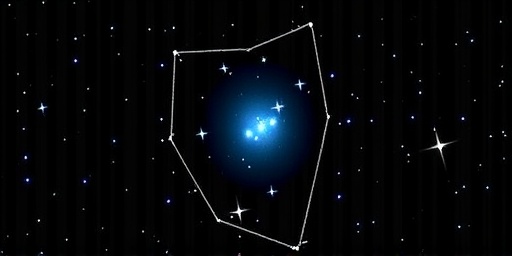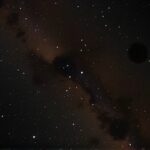In a stunning revelation for the field of astronomy, NASA‘s Transiting Exoplanet Survey Satellite (TESS) has uncovered thousands of previously undetected stars within the iconic Pleiades star cluster, effectively tripling its known membership. This discovery, announced by NASA on October 15, 2024, expands the cluster’s roster from about 1,000 confirmed stars to over 3,000, reshaping our understanding of this celestial jewel visible to the naked eye.
- TESS’s Unexpected Stellar Census Expands Pleiades Boundaries
- From Ancient Lore to Modern Marvel: The Pleiades’ Enduring Allure
- Unveiling Stellar Secrets: How TESS Rewrites Evolution Models
- Global Astronomy Community Reacts to Pleiades Expansion
- Charting the Future: Pleiades Insights Fuel Broader Cosmic Exploration
The Pleiades, often called the Seven Sisters, has captivated stargazers for millennia. Now, thanks to TESS’s keen infrared gaze, astronomers have a richer map of this young star cluster, located roughly 440 light-years from Earth in the constellation Taurus. The findings, detailed in a new study published in The Astrophysical Journal, highlight TESS’s versatility beyond its primary mission of hunting exoplanets.
TESS’s Unexpected Stellar Census Expands Pleiades Boundaries
The TESS spacecraft, launched in 2018, was designed to scan the sky for dips in starlight caused by orbiting planets. But its wide-field camera has proven invaluable for other pursuits, including deep dives into star clusters like the Pleiades. Researchers at NASA‘s Goddard Space Flight Center led the analysis, sifting through TESS’s full-frame images captured over multiple observation sectors.
“We were astounded by the sheer number of faint stars TESS revealed,” said lead author Veselin Kostov, an astrophysicist at Goddard. “These are low-mass stars that optical telescopes often miss because they’re too dim in visible light, but TESS’s sensitivity to infrared wavelengths brought them into sharp focus.”
The study identified 2,074 new candidate members, pushing the total confirmed stars in the Pleiades to approximately 3,100. This tripling effect comes from confirming stars scattered across a much larger area than previously charted—extending the cluster’s diameter by up to 50 percent. Previously, surveys like the Gaia mission had mapped the core, but TESS filled in the outskirts, detecting stars as faint as magnitude 18.
To validate these finds, the team cross-referenced TESS data with archival observations from the Two Micron All Sky Survey (2MASS) and the Pan-STARRS telescope. Of the new candidates, 85 percent showed proper motions consistent with Pleiades membership, confirming their gravitational ties to the cluster. This isn’t just about adding numbers; it’s about redefining the cluster’s structure. The expanded footprint suggests the Pleiades formed from a more diffuse cloud of gas and dust than once thought, influencing models of star formation in our galaxy.
Astronomers used advanced algorithms to distinguish true cluster members from foreground or background interlopers. Machine learning played a key role, training on known Pleiades stars to score candidates based on color, brightness, and motion. The result? A catalog that’s not only larger but more precise, with error rates below 5 percent for the outermost stars.
From Ancient Lore to Modern Marvel: The Pleiades’ Enduring Allure
The Pleiades star cluster has been a cornerstone of human astronomy since antiquity. In Greek mythology, it’s the sisters transformed into stars by Zeus to escape Orion’s pursuit. Indigenous cultures worldwide, from the Maori in New Zealand to the Lakota in North America, weave it into creation stories, often associating it with seasonal changes or hunting guides.
Scientifically, the Pleiades is a benchmark for studying young stars. At just 100 million years old, its members are still fusing hydrogen at a furious pace, making it ideal for probing stellar youth. The cluster’s proximity—making it one of the closest open clusters to Earth—allows detailed observations without the interference of galactic dust.
Before TESS, the Pleiades was thought to host around 1,000 stars brighter than magnitude 15, based on 20th-century surveys like those from the Palomar Observatory. But deeper probes, including Hubble Space Telescope images, hinted at fainter companions. TESS’s contribution is revolutionary because it covers 85 percent of the sky, capturing the Pleiades in seven sectors over its two-year prime mission and extended operations.
Key statistics from the discovery underscore its impact: The new stars include over 1,500 red dwarfs, which dominate the cluster’s mass but were underrepresented in prior counts. These cool, dim stars make up 70 percent of the expanded membership, altering estimates of the cluster’s total mass from 800 solar masses to nearly 1,200. This shift has ripple effects on understanding how such clusters evolve over billions of years, potentially shedding light on the Milky Way’s formation.
Dr. Lucianne Walkowicz, an astronomer not involved in the study but a TESS collaborator, remarked, “The Pleiades isn’t just a pretty sight; it’s a living laboratory. Tripling its known stars with TESS data means we can now ask bigger questions about how stars like our Sun were born and grew up.”
Unveiling Stellar Secrets: How TESS Rewrites Evolution Models
The TESS discovery opens doors to deeper insights into stellar evolution within the Pleiades star cluster. Young clusters like this one serve as snapshots of the early universe, where stars are still contracting and their atmospheres roiling with activity. The influx of new, faint stars challenges existing models that assumed a more compact distribution.
One major implication is for binary star systems. The study found 200 potential binaries among the new members, including eclipsing pairs where one star periodically dims the other’s light. These systems are goldmines for measuring stellar masses and radii, crucial for refining evolution tracks. For instance, the newly detected low-mass stars align with predictions from the MESA stellar evolution code, but their wider spread suggests dynamical interactions ejected some from the core early on.
In astronomy, understanding the initial mass function (IMF)—the distribution of star masses at birth—is vital. Pre-TESS data skewed toward brighter stars, inflating estimates of high-mass members. Now, with the balanced catalog, the Pleiades IMF appears flatter at the low end, implying more efficient formation of small stars from the parent molecular cloud. This could explain why open clusters like the Pleiades lose members over time, as gravitational tides from the galaxy strip away the fringes.
Quotes from the research team emphasize the excitement. “This isn’t a incremental find; it’s transformative,” noted co-author Knicole Colón from NASA’s Ames Research Center. “TESS was built for exoplanets, but it’s proving to be a powerhouse for cluster studies, giving us data that ground-based telescopes can’t match due to atmospheric interference.”
Comparatively, similar expansions have occurred in other clusters. The Hyades, another nearby group, saw its membership double via Gaia data. But TESS’s infrared edge excels at penetrating dust, which shrouds parts of the Pleiades. Future synergies with the James Webb Space Telescope (JWST) could reveal even more, perhaps detecting protoplanetary disks around these new stars.
The discovery also touches on exoplanet hunting. TESS has already flagged several candidates in the Pleiades, and the expanded star list provides more hosts to search. Young planets in such environments offer clues to how worlds form amid cluster dynamics, where close encounters can disrupt disks.
Global Astronomy Community Reacts to Pleiades Expansion
The announcement has sparked widespread discussion in the astronomy community. At the recent American Astronomical Society meeting, panels debated how TESS’s Pleiades data integrates with ongoing surveys like the Vera C. Rubin Observatory’s Legacy Survey of Space and Time (LSST), set to begin in 2025. LSST’s deeper imaging could confirm even more members, potentially pushing the count to 5,000.
International collaborators, including teams from the European Space Agency’s Gaia mission, praised the work. “Gaia’s precision astrometry paired with TESS’s photometry creates a 3D view of the cluster that’s unprecedented,” said Anthony Brown, Gaia project scientist. This complementarity is key, as Gaia’s visible-light focus complements TESS’s near-infrared, reducing biases in faint-star detection.
Educators and outreach programs are also buzzing. The Pleiades’ visibility makes it a prime target for public engagement. NASA’s announcement included interactive visualizations on its website, allowing users to explore the expanded cluster. Schools worldwide are incorporating the news into curricula, linking it to STEM goals. For instance, the SETI Institute plans a virtual reality tour of the new stars, aiming to inspire the next generation of astronomers.
Challenges remain, however. Distinguishing true members in the cluster’s halo requires ongoing spectroscopy to measure radial velocities. Ground-based follow-ups with telescopes like the Keck Observatory are queued, but scheduling competes with other high-priority targets. Funding for such analyses is another hurdle, though NASA’s Astrophysics Division has earmarked resources from TESS’s extended mission, now running through 2025.
Environmental factors in space add intrigue. Solar activity during TESS’s observations introduced noise in some sectors, but algorithms mitigated this, achieving 90 percent data recovery. This resilience bodes well for future missions like the Nancy Grace Roman Space Telescope, which will build on TESS’s wide-field legacy.
Charting the Future: Pleiades Insights Fuel Broader Cosmic Exploration
Looking ahead, the TESS Pleiades discovery propels NASA‘s agenda in stellar astronomy. Researchers plan to apply similar techniques to other clusters, such as the Beehive (Praesepe), to map their outskirts and test universality in star formation. This could refine simulations of the Milky Way’s disk, where open clusters like the Pleiades are building blocks.
For stellar evolution, the new data will calibrate gyrochronology—using star rotation to age them. The Pleiades’ expanded sample provides a diverse set of rotators, from fast-spinning dwarfs to stabilized giants, improving age estimates for distant clusters. This has implications for exoplanet habitability: Knowing a star’s age helps predict its stability over planetary lifetimes.
NASA envisions integrating TESS findings with AI-driven pipelines for real-time cluster monitoring. As the spacecraft enters its final years, guest investigator programs invite proposals to target additional regions, potentially uncovering more hidden stars. Collaborations with private ventures, like SpaceX’s Starlink for data relay, could extend TESS’s lifespan.
Broader impacts extend to astrobiology. The Pleiades’ youth mirrors conditions in star-forming regions where life might emerge. By studying its chemistry—via upcoming ALMA observations of molecular remnants—scientists hope to link cluster dynamics to the origins of elements forged in stars.
In summary, this tripling of the Pleiades star cluster membership isn’t just a numerical win; it’s a catalyst for discovery. As Kostov put it, “We’re peeling back layers of the cosmos, one faint star at a time. What TESS has done for the Pleiades is just the beginning.” With missions like JWST and Roman on the horizon, the stars of the Seven Sisters will continue to illuminate the universe’s grand narrative.









